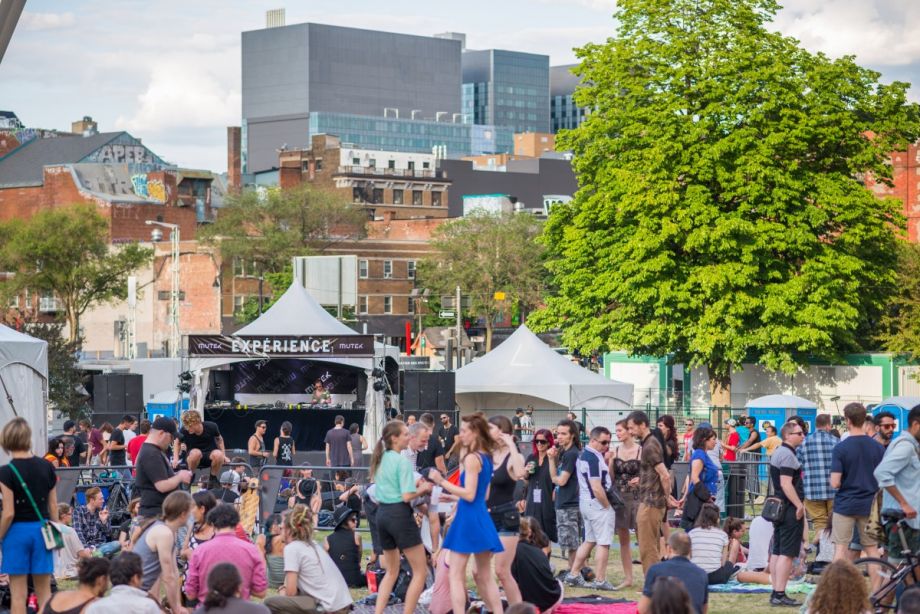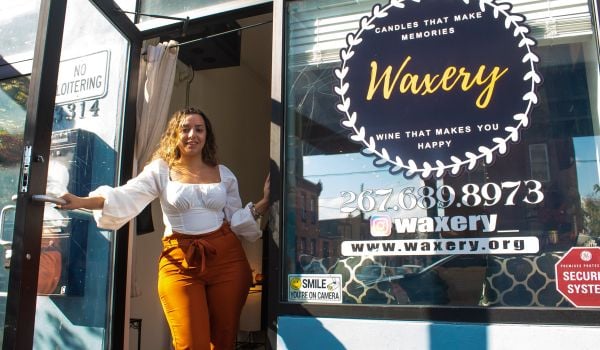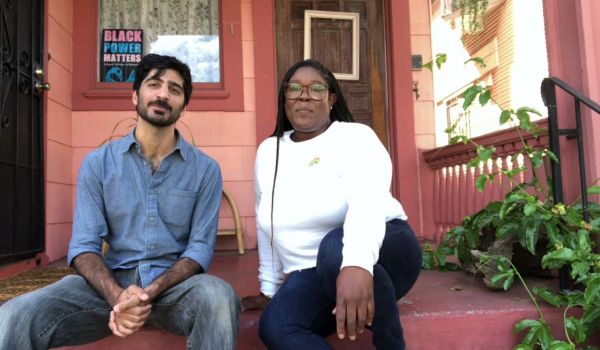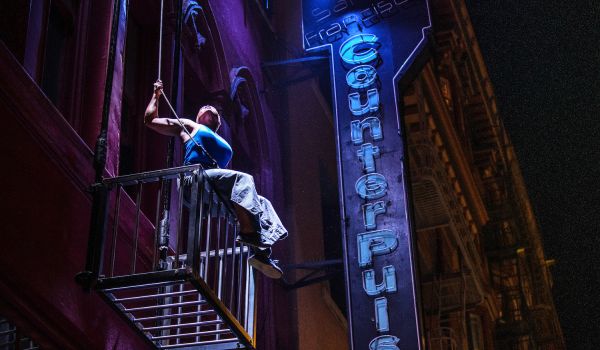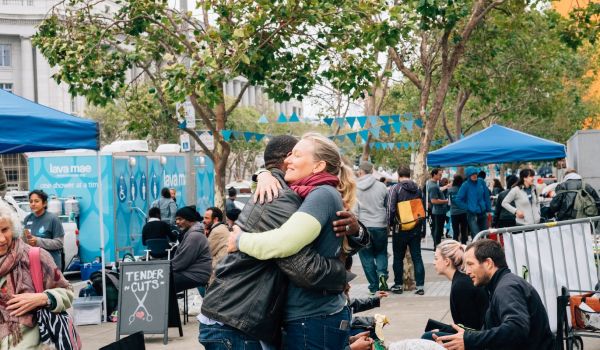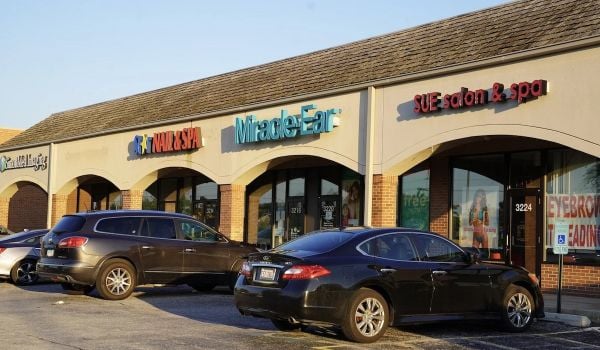Summery electronic beats floated through the air alongside fragrant cheese and the occasional whiff of marijuana. Picnic blankets laden with pâté and baguettes commingled with flowing bottles of beer and wine. Families parked strollers, millennials lounged near their bikes, and techno tourists went gaga for Swedish DJ and producer Peder Mannerfelt.
The occasion for such a languid Saturday afternoon earlier this month in downtown Montreal was MUTEK, a festival dedicated to electronic music and digital arts that held its 17th edition this year. Its free programming at the Parterre, a simple plaza easily converted into a performing arts venue, is just a small sampling of the festival overload that takes hold every summer in the city’s Quartier des Spectacles, a downtown cultural district that hosts most of the outdoor fêtes.
Even as the 40,000 MUTEK attendees, roughly half from outside the metropolitan area, fluttered among a handful of the Quartier’s sleek venues, workers were busy maneuvering lighting trusses and erecting stages on downtown streets to accommodate the 500,000 that came for Les FrancoFolies, a French-language music festival that wraps up Friday, and the 2.5 million expected for the Montreal Jazz Festival, which starts June 26.
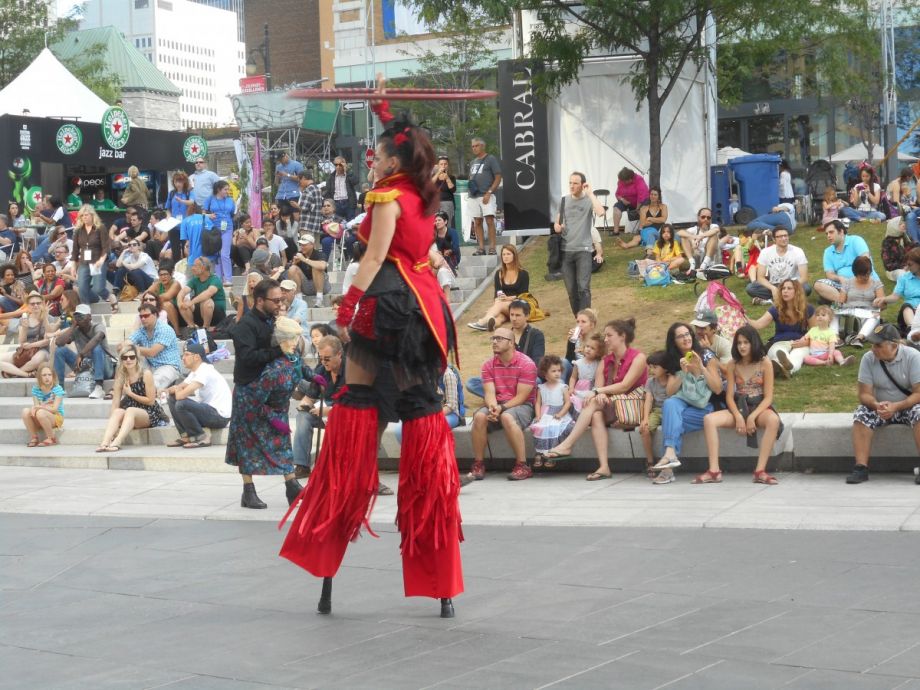
Montreal Jazz Festival, 2015 (Photo by Jean Gagnon)
“For the size of Montreal, that’s pretty astounding,” says the bureau’s director, Daniel Bissonnette. The metro area of 4 million has a comparatively low GDP per capita, he points out, but through a combination of dedicated cultural infrastructure and savvy marketing, it punches well above its weight. Cities have come knocking at his door to ask what’s in Montreal’s secret sauce, he says, most recently Los Angeles.
At the end of June, Bissonnette will travel to Kraków, Poland, for a meeting of a nascent, as-yet-unnamed international network of festival cities that also includes the likes of Adelaide, Barcelona, Berlin and Edinburgh.
But as the city’s international festival acclaim grows, it must also continue to nurture the local cultural community, whose public arts funding is in limbo as the provincial government plans to cut back while the federal government has pledged to increase support. Plus, next year concludes the scope of the city’s 10-year cultural plan and the city council is poised to adopt a new strategy. While it’s still early for any concrete details, the bustling summer scene downtown offers some clues as to what the future might hold.
The square-kilometer patch of the eastern edge of downtown Montreal demarcated as the Quartier des Spectacles was once the city’s red light district and a popular cheap housing option for artists. But it was also the home to the symphony and opera halls, a clutch of theaters and music venues, and the Museum of Contemporary Art — now MUTEK’s annual home base. First proposed in 2002, the Quartier des Spectacles came together over the last decade through a series of demolitions, rehabs and new constructions. The artists living there were, by and large, kicked out — whether by eviction or escalating housing costs as new condos came into the neighborhood. Some affordable live-work space was built in the Mile End neighborhood in exchange for the loss, but the artistic community who created the cachet for the neighborhood to become the Quartier des Spectacles was not compensated directly.
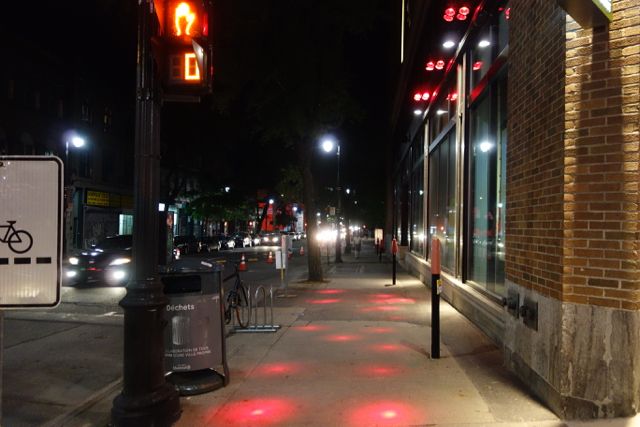
Red illumination on many of the Quartier’s sidewalks pay homage to its seedier days. (Photo by Greg Scruggs)
The result has been a resurgence in downtown living by a more well-heeled crowd attracted to the city’s cultural offerings, which mirrors trends across North America. But while cities like Philadelphia have managed at best an Avenue of the Arts, Montreal has taken over a whole neighborhood and it continues to grow. “The Quartier des Spectacles is not a finished thing,” notes MUTEK Director Alain Mongeau.
Chantal Fontaine opened a bistro two years ago in the heart of the quarter along Boulevard Saint-Laurent, which is pedestrianized during the summer festival months. “The golden age of the red light district passed a long time ago,” she says, dismissing any nostalgia for the neighborhood’s previous incarnation.
Also an accomplished comedienne, Fontaine lives three blocks away and notes that she can walk out the front door of her condo at 7:45 p.m. to make an 8 o’clock show. She envisions the Quartier as the city’s answer to Broadway in New York and hopes that the city’s new cultural strategy will reflect that ambition.
“International renown, that Montreal becomes an incubator of shows that tour the world,” she says. “We must value our local culture abroad, we have the talent for that.”
MUTEK, meanwhile, is already doing that and downtown is essential to its identity. “If we moved to another neighborhood we’d have to remap the whole discourse of the festival,” Mongeau says. “We feel like we’re contributing to the brand of the city.”Blending culture and commerce doesn’t sit well with everyone however. “Western society is pushing us to be entrepreneur artists,” laments Ghislain Poirier, a DJ/producer and a fixture on Montreal’s music scene who has played at MUTEK in past years.
In 2010, he wrote an open letter to the mayor complaining that the city was kowtowing to new condo dwellers’ noise complaints and shutting down music clubs — the very venues that made the neighborhood appealing for real estate developers in the first place. That issue has since quieted down, with Bissonnette pointing out new building codes requiring triple-pane windows, policies governing the timing of outdoor amplified sound during festivals, and municipal noise inspectors who will come to a complainant’s home to objectively measure interior sound. “That’s the price you pay to have the excitement downtown,” he says. “A park far away from downtown? That’s not how Montreal works.”
Nevertheless, Poirier is convinced that the cultural geography of the city has changed as a result. “Downtown is more for performing, it’s not a place of creation,” he says. “Before it was lofts and artists. Now it’s venues and festivals, mass culture and Hollywood big events.” At the same time, such bookings are valuable and Poirier looks forward to the fat paycheck from festival gigs in the Quartier des Spectacles, which help him pay Montreal’s still affordable, but nevertheless rising, cost of living.
While the trend of displaced artists is hardly unique to Montreal, the phenomenon of cultural gentrification is atypical — newer, fancier forms of culture displacing older, scruffier types. As the city prepares to plan ahead for the next 10 years, it may be time to put on the brakes, Poirier says. “There are almost too many events. We’re coming to a saturation point.”

Gregory Scruggs is a Seattle-based independent journalist who writes about solutions for cities. He has covered major international forums on urbanization, climate change, and sustainable development where he has interviewed dozens of mayors and high-ranking officials in order to tell powerful stories about humanity’s urban future. He has reported at street level from more than two dozen countries on solutions to hot-button issues facing cities, from housing to transportation to civic engagement to social equity. In 2017, he won a United Nations Correspondents Association award for his coverage of global urbanization and the UN’s Habitat III summit on the future of cities. He is a member of the American Institute of Certified Planners.

